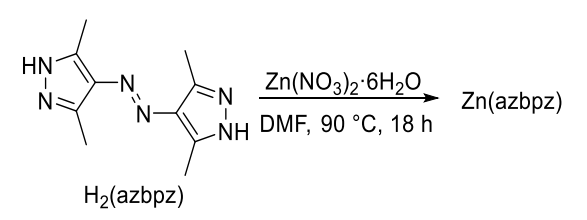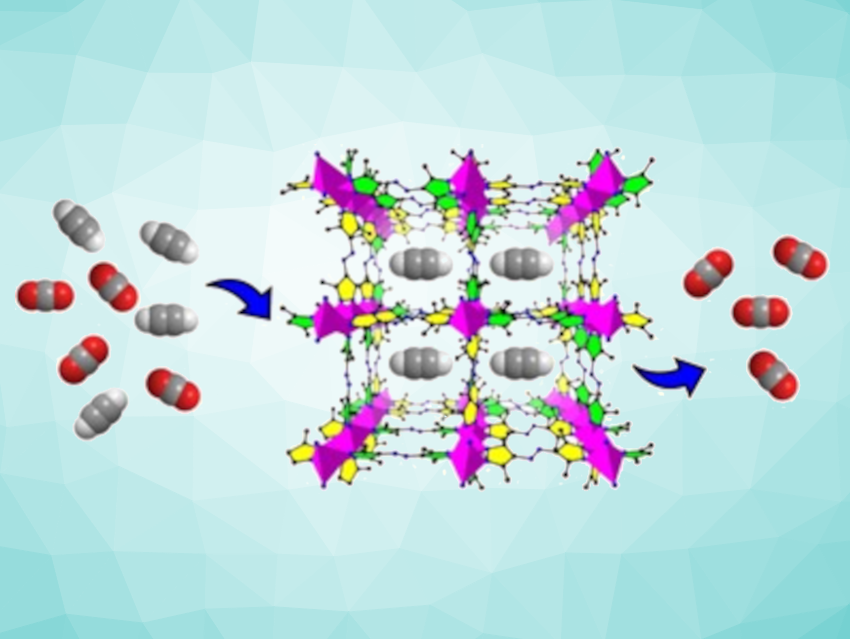Acetylene (C2H2), an important fuel and chemical feedstock, is typically produced via petroleum cracking or partial methane combustion. Both of these processes generate carbon dioxide as a byproduct. Due to the similar physical properties of C2H2 and CO2, their separation usually requires energy-intensive methods such as cryogenic distillation or solvent extraction. More efficient and sustainable adsorption separation technologies are, thus, interesting research targets. Metal–organic frameworks (MOFs), porous materials composed of metal centers and organic linkers, could be useful in this context.
Casey Wade, The Ohio State University, Columbus, USA, and colleagues have synthesized the zinc dipyrazolate MOF Zn(azbpz) (azbpz2– = 4,4′-azobis(3,5-dimethylpyrazolate) for use in gas separation. The MOF was prepared under solvothermal conditions from Zn(NO3)2·6H2O and H2(azbpz) (pictured below) in dimethylformamide (DMF) at 90 °C.

Using micro-crystal electron diffraction, the team found that the MOF contains square-shaped channels formed from chains of Zn2+ ions connected by the dipyrazolate linkers. Zn(azbpz) can be used for the adsorptive separation of C2H2 from CO2 with an estimated selectivity of 2.6 at 300 K and 1 bar. C2H2 could be easily desorbed from the MOF in 97 % purity. Simulations indicate that the C2H2/CO2 separation mechanism is facilitated by the interaction of acetylene with the electron-rich azo groups. This work shows the potential of chain-type dipyrazolate MOFs as adsorbents for challenging gas separation applications.
- C2H2/CO2 Separation with a Chain‐Type Zn Pyrazolate MOF,
Grant Berkbigler, Qiao Liu, Nicole Hoefer, Yi Xie, Jordon S. Hilliard, David W. McComb, Casey R. Wade,
Eur. J. Inorg. Chem. 2023.
https://doi.org/10.1002/ejic.202300548




